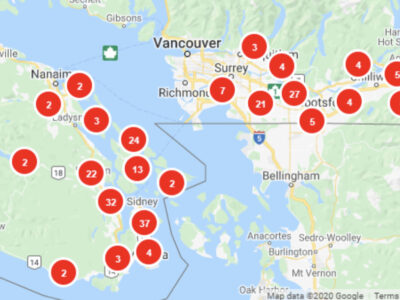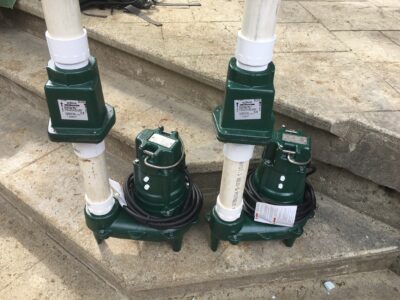Automatic Standby Generators: The Perimeter Pump & Power Process
A few months back I was hanging out at a friend’s house in North Vancouver during a typically dark and stormy night. the company was great, the mood outside was not. Down, down, down the rain fell throughout the evening before turning into flakes of snow that looked like enormous white leaves falling from the sky.
And because I don’t know how to switch off of work mode, my Perimeter Drainage day popped into my head and I started to worry about the impact the storm was going to have on this beautiful North Van home located right at the bottom of a steep rocky embankment. Surely the power was going to be knocked out shortly.
And then I heard it. A low hum outside.
The standby generator kicked on.
Now, the fact that the generator just happened to switch on in that moment was a coincidence. If the power had been knocked out during the storm then the standby signal would provide power to the house.
So I guess I wasn’t the only machine incapable of turning work off completely!
Perimeter Pump & Power Process: The Design
We work closely with customers to find the right size and strength of generator because we want to be as efficient as possible. You don’t start a company that’s dedicated to green, sustainable living by wasting power or money. Did I mention that we are an Authorized Cummins Dealer for installations of residential home emergency backup generators? Well I have now.
During the design step we want to determine if a home needs a 6, 13, 17, or 20 kilowatt generator.
- 6 kilowatt: handles pumps and a bank of lights
- 13 kilowatt: fridge, freezer, furnace, bank of lights
- 17 kilowatt: handles a good portion of a regular sized house in the event of a power outage
- 20 kilowatt can handle an entire regular sized house
Other questions we answer in this phase are pretty basic.
- How much does the home owner want to spend?
- How large of a load does the generator need to support?
- Is the home pre-wired for a generator and transfer switch?
The Installation
There are two main keys we focus on when we’re installing an automatic standby generator.
- Placement or location: the location will determine how we can efficiently run wires to the panel and how far away the natural gas line service or branch is. The generators we use are completely waterproof so they don’t need to be protected from the elements.
- Noise: since the generator will cycle and kick on randomly, you don’t want to have your generator near your neighbour’s living room wall – they’re already going to be mad when they look at your house during a storm and it’s all lit up and they’re stuck in the dark.
We also get asked often if we build our own generators, and the answer is no. We use Cummins generators.
“A permanently installed Cummins home backup generator protects your home automatically. It runs on natural gas or liquid propane (LP) fuel, and sits outside just like a central air conditioning unit. A home backup generator delivers power directly to your home’s electrical system, backing up your entire home or just the most essential items.”
Repairs & Maintenance
The good thing and the bad thing about automatic standby generators is they either work or they don’t.
Every two weeks the generator will cycle for 15 minutes to ensure everything is running properly. Our machines also have an indicator light to tell you when service is required, so there’s even less guesswork. Automation – beautiful, hey? Plus, there are apps you can get on your phone that tell you when your generator runs, so you can feel some piece of mind when you’re at the hockey rink.
So if you need service, please, please, please give us a call if it’s something you can’t handle yourself. Don’t ignore it, or else you might ruin the party!




